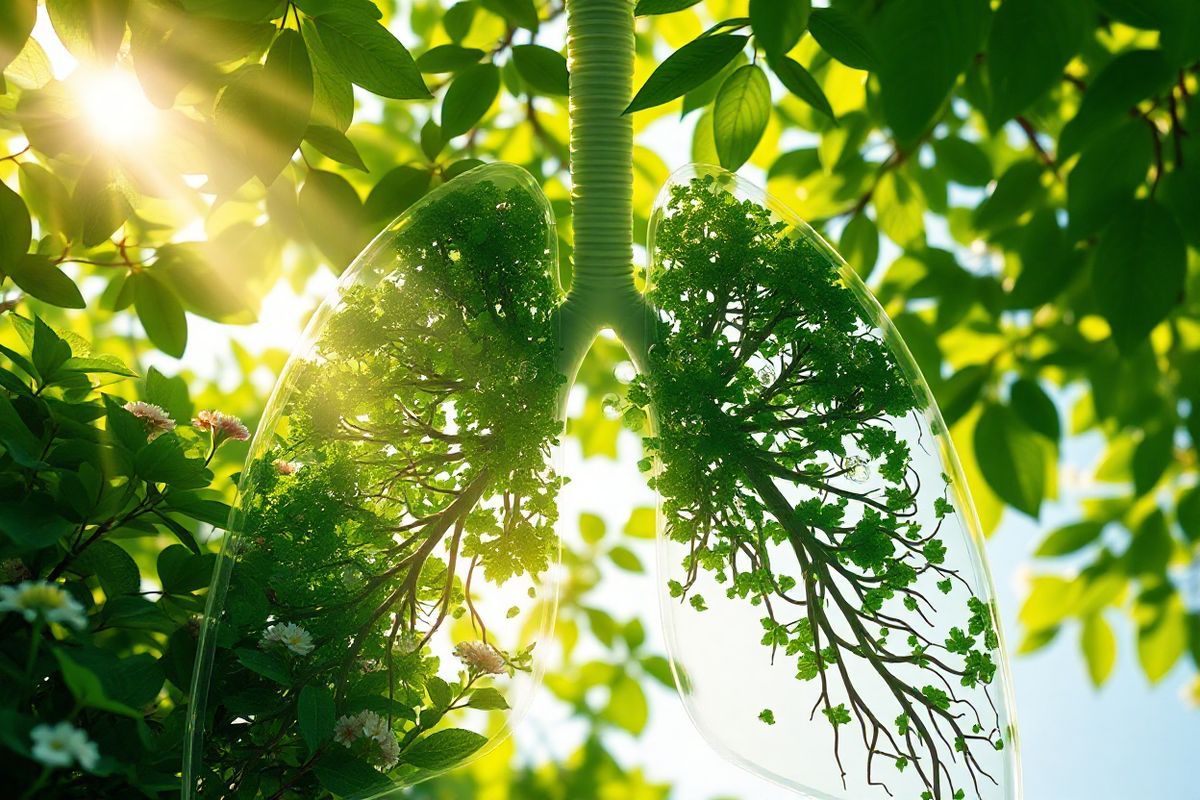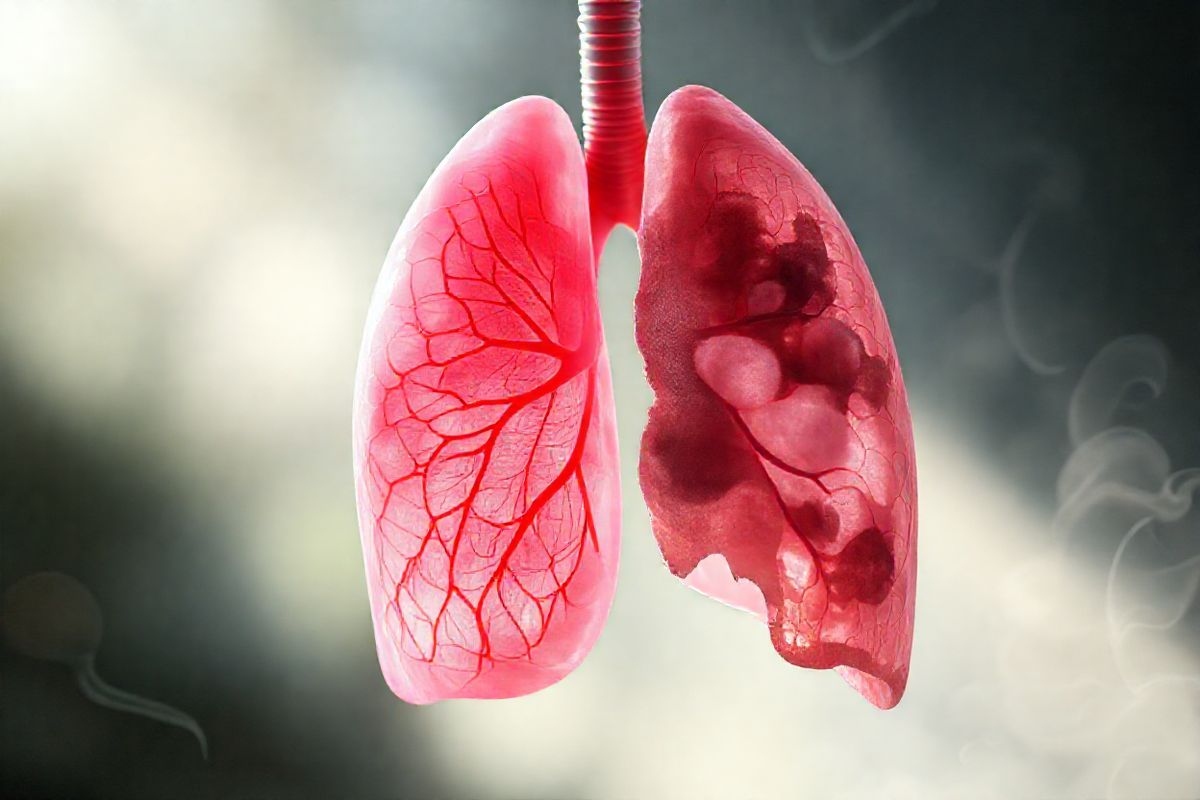Table of Contents
What is Emphysema? A Deep Dive into Lung Health

emphysema is a chronic lung disease that falls under the umbrella of chronic obstructive pulmonary disease (copd). It is characterized by damage to the alveoli, the tiny air sacs in the lungs where gas exchange occurs. As these air sacs become damaged, they lose their elasticity and ability to function effectively, leading to reduced airflow and difficulty in breathing. The primary cause of emphysema is long-term exposure to irritants, particularly cigarette smoke, which accounts for approximately 70% of cases in high-income countries. Other contributing factors can include exposure to air pollution, occupational hazards, and rare genetic conditions like alpha-1 antitrypsin deficiency (WHO, 2023).
The disease progresses slowly, often taking years to manifest symptoms. These symptoms can include shortness of breath, chronic cough, wheezing, and fatigue. As the disease worsens, individuals may experience increased breathlessness even during routine activities, ultimately leading to significant impairment in quality of life (American Lung Association, 2023). While emphysema is not curable, early diagnosis and appropriate management can help alleviate symptoms and improve overall lung function.
Exploring Paraseptal Emphysema: The Unique Type of Lung Damage

Paraseptal emphysema (PSE) is a specific type of emphysema that primarily affects the outer regions of the lungs, particularly the alveoli adjacent to the pleura, the lining surrounding the lungs. PSE may occur alongside other forms of emphysema, including centrilobular and panlobular emphysema, but it can also present independently without significant symptoms until complications arise (Healthline, 2023).
The pathophysiology of paraseptal emphysema involves the destruction of alveolar walls, leading to the formation of large air pockets instead of multiple small ones. This change disrupts the normal gas exchange process, trapping stale air in the lungs and preventing efficient oxygen transfer to the bloodstream. As a result, individuals may experience symptoms such as chest tightness, shortness of breath, and wheezing, although these symptoms may not be present until the disease has progressed considerably (Health.com, 2023).
Types of Emphysema
Emphysema is categorized into three primary types based on the location of damage within the lungs:
- Centrilobular Emphysema: Most common type, primarily affecting the upper lobes of the lungs. It is usually associated with smoking.
- Panlobular Emphysema: Affects the entire acinus, including the alveoli and bronchioles. This type is often linked to alpha-1 antitrypsin deficiency.
- Paraseptal Emphysema: Affects the peripheral areas of the lungs and is often associated with the upper regions.
Understanding these distinctions is crucial for determining the appropriate management strategies and predicting disease progression (BetterHealth, 2023).
Common Causes of Emphysema: From Smoking to Environmental Risks
The primary cause of emphysema is prolonged exposure to harmful substances, with cigarette smoking being the most prevalent. It is responsible for approximately 80% to 90% of all emphysema cases (Lung.org, 2023). The risk of developing emphysema increases with the duration and quantity of tobacco use. Other significant causes include:
- Environmental Pollutants: Exposure to industrial fumes, dust, and particulate matter can contribute to lung damage, particularly in occupational settings.
- Indoor Air Pollution: This can arise from the use of biomass fuels (wood, animal dung) for cooking and heating, which is common in low-income countries.
- Genetic Factors: Conditions such as alpha-1 antitrypsin deficiency can predispose individuals to develop emphysema at a younger age.
- Other Lung Conditions: Pre-existing respiratory conditions, such as asthma, can increase susceptibility to emphysema (WHO, 2023).
Understanding these risk factors is essential for prevention and early intervention strategies.
Recognizing Symptoms: How to Identify Paraseptal Emphysema Early
The symptoms of paraseptal emphysema can be subtle and often overlap with other respiratory conditions, leading to potential delays in diagnosis. Early symptoms may include:
- Shortness of Breath: Initially occurring during physical exertion, it can progress to breathlessness at rest as the disease advances.
- Chronic Cough: A persistent cough that may produce mucus.
- Wheezing: A high-pitched whistling sound when breathing, indicating narrowed airways.
- Chest Tightness: A feeling of pressure or discomfort in the chest area.
As the disease progresses, individuals may also experience fatigue, weight loss, and cyanosis—a bluish tinge to the skin due to low oxygen levels (American Lung Association, 2023). It is vital for individuals experiencing these symptoms to seek medical attention for proper evaluation and diagnosis.
Diagnosis of Paraseptal Emphysema
Diagnosing paraseptal emphysema involves a comprehensive assessment that includes:
- Medical History: Evaluating risk factors such as smoking history and exposure to pollutants.
- Physical Examination: Checking for signs of respiratory distress and abnormal lung sounds.
- Lung Function Tests: Spirometry is the primary test used to measure breathing capacity and airflow obstruction.
- Imaging Studies: Chest X-rays and CT scans can reveal lung damage, including the presence of emphysema and its extent (Pulmonary Emphysema, 2023).
Accurate diagnosis is critical for implementing effective treatment strategies and monitoring disease progression.
Effective Treatment Strategies for Emphysema and Paraseptal Emphysema
While there is no cure for emphysema, various treatment options can help manage symptoms and improve quality of life. The approach to treatment typically involves a combination of lifestyle changes, medications, and supportive therapies.
Lifestyle Changes
- Smoking Cessation: Quitting smoking is the most effective way to slow disease progression and improve lung function. Support programs and pharmacotherapy may assist in this process.
- Avoiding Irritants: Minimizing exposure to air pollution, occupational hazards, and secondhand smoke is crucial.
- Regular Exercise: Engaging in a structured exercise program can enhance lung capacity and overall physical fitness (COPD, 2023).
Medications
- Bronchodilators: These medications relax the muscles around the airways, facilitating easier breathing. They can be short-acting for immediate relief or long-acting for daily management.
- Corticosteroids: These reduce inflammation in the airways and are often used during exacerbations.
- Antibiotics: Prescribed during bacterial infections that exacerbate symptoms (Healthline, 2023).
Supportive Therapies
- Oxygen Therapy: For individuals with low oxygen levels, supplemental oxygen can improve oxygenation and alleviate symptoms.
- Pulmonary Rehabilitation: This comprehensive program includes exercise, education, and support, aimed at enhancing lung function and quality of life (American Lung Association, 2023).
- Surgical Options: In severe cases, surgical interventions such as lung volume reduction surgery or lung transplants may be considered (BetterHealth, 2023).
Table: Summary of Treatment Options for Emphysema
| Treatment Type | Description |
|---|---|
| Smoking Cessation | Quitting smoking to halt disease progression |
| Bronchodilators | Medications to relax airways and improve airflow |
| Corticosteroids | Anti-inflammatory drugs for managing exacerbations |
| Oxygen Therapy | Supplemental oxygen for low blood oxygen levels |
| Pulmonary Rehabilitation | Structured program for exercise and education |
| Surgical Interventions | Options for severe cases, including lung transplants |
FAQ Section
What is the main cause of paraseptal emphysema?
The primary cause of paraseptal emphysema is long-term exposure to harmful substances, with cigarette smoking being the most significant risk factor.
How is paraseptal emphysema diagnosed?
Diagnosis involves a thorough medical history, physical examination, lung function tests, and imaging studies like chest X-rays and CT scans.
Can paraseptal emphysema be cured?
There is currently no cure for paraseptal emphysema, but treatment options can help manage symptoms and improve quality of life.
What lifestyle changes can help manage symptoms?
Quitting smoking, avoiding air pollutants, and engaging in regular exercise are crucial lifestyle changes that can help slow disease progression.
What are the treatment options for paraseptal emphysema?
Treatment options include bronchodilators, corticosteroids, oxygen therapy, pulmonary rehabilitation, and in severe cases, surgical interventions.
References
- BetterHealth. (2023). Emphysema. Retrieved from https://www.betterhealth.vic.gov.au/health/conditionsandtreatments/emphysema
- Health.com. (2023). What Is Emphysema? Retrieved from https://www.health.com/emphysema-overview-7111469
- Healthline. (2023). Paraseptal Emphysema: Causes, Symptoms, Treatment, and More. Retrieved from https://www.healthline.com/health/paraseptal-emphysema
- Lung.org. (2023). Emphysema. Retrieved from https://www.lung.org/lung-health-diseases/lung-disease-lookup/emphysema
- WHO. (2023). Chronic obstructive pulmonary disease (COPD) copd)











